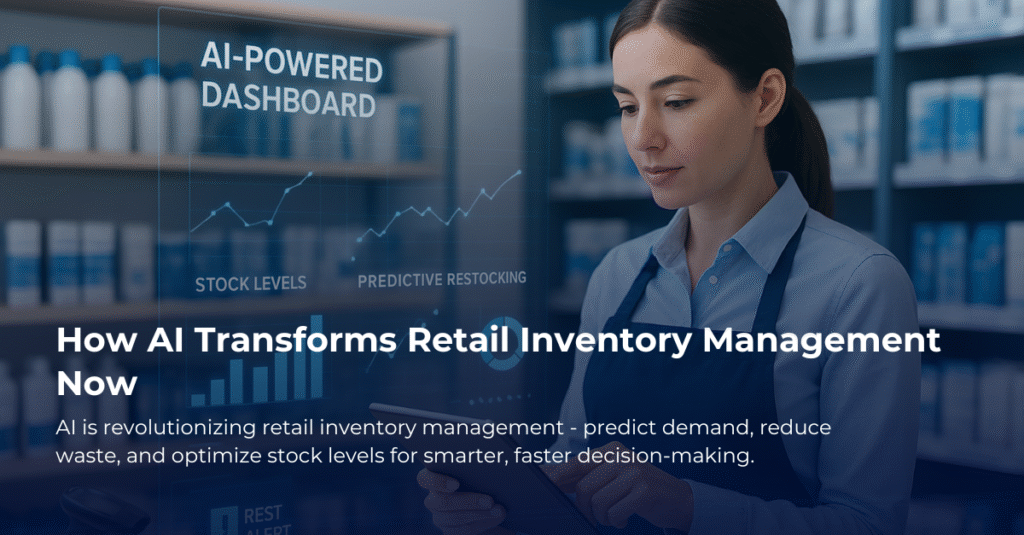How AI Can Help Retailers Manage Inventory Smarter
So, you’re sitting at your store, surrounded by stacks of boxes that hold everything from trendy shoes to seasonal decorations. Sound familiar? You’re not alone. Many retailers think they have inventory management all figured out. But, how often do those piles of inventory lead to both excessive stock and missed sales?
Let’s face it, we’ve all been there. Over-ordering, under-ordering, and trying to guess what your customers will want next month is like trying to predict the weather with a bad forecast. That’s where artificial intelligence (AI) steps in. Think of it as your new go-to assistant for making better decisions about what products to stock and when.
Understanding AI in Inventory Management
So, what exactly does AI do for inventory management? Well, it’s like having a smart friend who’s always watching trends and helping you decide what to order based on real data and patterns.
Here’s a breakdown of how AI can support your inventory management:
- Demand Forecasting: AI analyzes historical sales data, customer behavior, and market trends to predict what products will be in demand. This means you can stock up on what’s selling well and avoid overstocking items that won’t fly off the shelves.
- Automated Reordering: With AI, you can set up systems to automatically reorder stock when levels drop below a certain point. It’s like setting a reminder on your phone, but way smarter. The system knows how much to order and when, helping you maintain optimal stock levels.
- Shelf Optimization: AI can help you decide where to place products in your store for maximum impact. Imagine having a tool that tells you which items should be showcased for greater visibility and sales.
- Supply Chain Management: AI can optimize your supply chain by analyzing supplier performance, lead times, and shipping costs. It helps you find the best suppliers and negotiate better terms, ultimately cutting costs.
Real-World Examples
Think about a popular clothing retailer. They use AI to analyze customer purchases and trends, allowing them to predict which styles will become popular. Because of this insight, they can stock the most in-demand items while reducing excess inventory that could go to waste.
Another example is a grocery store that uses AI systems to determine how many items to keep in stock based on seasonal trends, local events, and past sales figures. This helps avoid running out of staples during holidays or having too much of a product that won’t sell.
Final Thoughts
So, how can AI help you manage your inventory smarter? By using data to guide your decisions, automating tedious tasks, and optimizing your store layout, AI creates a smoother and more efficient inventory process. This ultimately saves you money and ensures your customers find what they want when they walk through your doors.
In the end, it’s about working smarter, not harder. If you’re still juggling numbers in spreadsheets while trying to keep track of stock, it might be time to consider bringing AI into your retail operations. After all, who wouldn’t want a little extra help in making their business thrive?








